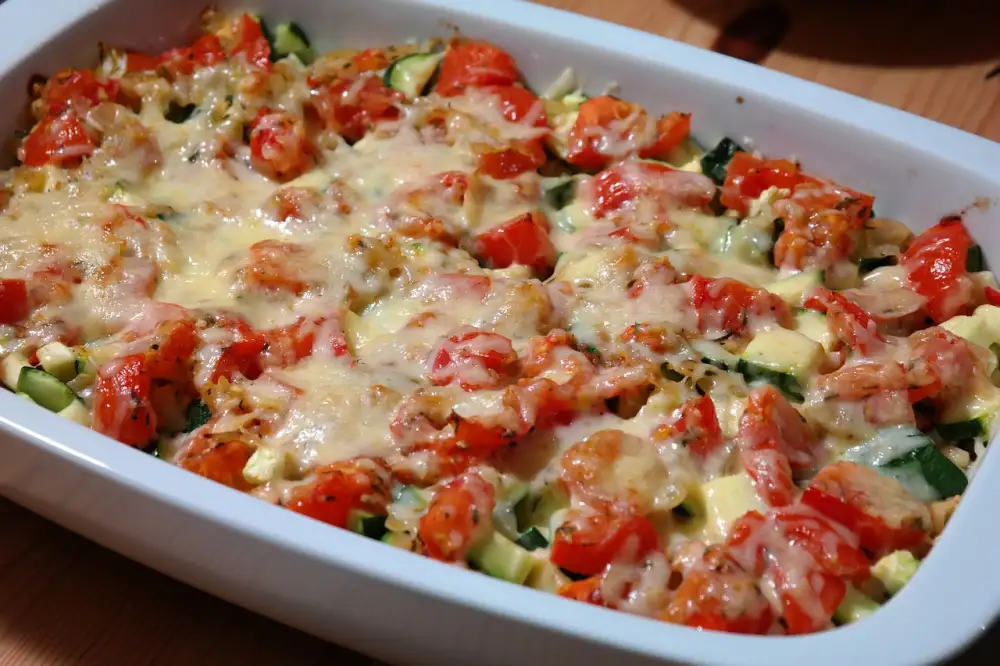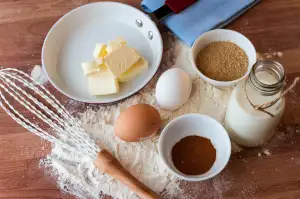Perfectly Baked Lasagna: Mastering the Art of Cooking Time for this Classic Italian Dish

Lasagna, a classic Italian dish loved by many around the world, is a culinary masterpiece that combines layers of pasta, rich tomato sauce, savory meat or vegetables, and creamy cheese. Baking lasagna is an art that requires precision and attention to detail in order to achieve the perfect balance of flavors and textures. Whether you are a seasoned chef or a beginner in the kitchen, mastering the art of cooking time for this delectable dish is essential. In this article, we will explore the techniques and factors that contribute to achieving a perfectly baked lasagna every time. So let's dive in and discover the secrets behind creating this mouthwatering Italian delight!
Preparing the lasagna for baking
Preparing the lasagna for baking is a crucial step in achieving a perfectly cooked dish. Start by preheating your oven to the recommended temperature, usually around 375°F (190°C). While the oven is heating up, assemble your lasagna layers. Begin with a thin layer of sauce at the bottom of your baking dish to prevent sticking. Then, alternate layers of cooked lasagna noodles, meat or vegetable filling, cheese, and sauce until you reach the top. Make sure to evenly distribute the ingredients to ensure even cooking. Finish with a generous sprinkle of cheese on top for that irresistible golden crust. Once assembled, cover the dish tightly with aluminum foil to trap steam and moisture during baking. This will help prevent dryness and ensure a moist and flavorful lasagna.
Determining the cooking time for lasagna
Determining the cooking time for lasagna is crucial to achieving a perfectly baked dish. The cooking time depends on various factors such as the size and thickness of the lasagna, the type of noodles used, and the temperature of the oven. Generally, traditional lasagna recipes require baking at 375°F (190°C) for about 30-40 minutes. However, it is essential to follow the specific instructions provided in your recipe.
To determine if your lasagna is cooked through, insert a knife or toothpick into the center. If it comes out hot and clean, without any resistance from undercooked noodles or raw filling ingredients, then your lasagna is likely done. Additionally, you can check if the cheese on top has melted and turned golden brown.
Keep in mind that larger or thicker lasagnas may require additional baking time. If you are making a deep-dish or layered lasagna with multiple fillings and extra cheese, it may take longer to cook through properly. In such cases, cover the dish with foil during part of the baking process to prevent excessive browning while ensuring even cooking.
Remember that every oven is different; some may cook faster or slower than others. It's always best to rely on visual cues and doneness tests rather than solely relying on recommended cooking times. Adjustments in cooking time might be necessary based on personal preferences and desired texture.
By understanding these factors and conducting regular checks during baking, you can master the art of determining the perfect cooking time for your lasagna. This will result in a deliciously baked dish with tender noodles, flavorful filling, and perfectly melted cheese – truly a culinary masterpiece!
Factors that affect the cooking time
Factors that affect the cooking time of lasagna can vary depending on various elements. One crucial factor is the thickness of the pasta layers. Thicker layers will require more time to cook through, while thinner layers will cook faster. Additionally, the type and amount of ingredients used in the filling can impact the cooking time. For instance, a lasagna with a dense meat filling may take longer to cook compared to a vegetarian lasagna with lighter ingredients. The temperature of the oven also plays a significant role in determining cooking time. A higher oven temperature will result in faster cooking, while a lower temperature will require more time. Lastly, the size and material of the baking dish can affect how evenly heat is distributed, potentially impacting cooking time as well. It's essential to consider these factors when determining the appropriate cooking time for your lasagna recipe.
Recommended cooking times for different types of lasagna
Recommended cooking times for different types of lasagna may vary depending on the ingredients and thickness of the layers. For traditional meat lasagna, a baking time of around 45-60 minutes at 375°F (190°C) is usually sufficient. Vegetarian or seafood lasagna, which tend to have lighter fillings, may require slightly less time, around 35-45 minutes.
If you're making a lasagna with no-boil noodles, it's important to follow the instructions on the package as they may require longer baking times. Additionally, if you're using fresh pasta sheets instead of dried noodles, reduce the cooking time by about 10-15 minutes.
For mini or individual-sized lasagnas, decrease the cooking time by approximately 10-15 minutes compared to a regular-sized one.
Remember that these are general guidelines and it's crucial to check for doneness using visual cues such as bubbling sauce and golden brown cheese. Adjust the cooking time accordingly based on your desired level of crispness and texture.
By following these recommended cooking times, you'll be well on your way to mastering the art of baking a perfectly delicious lasagna every time.
Checking for doneness
Checking for doneness is a crucial step in achieving a perfectly baked lasagna. To ensure that your lasagna is cooked to perfection, there are a few key indicators to look out for. Firstly, the cheese on top should be golden brown and bubbly. This indicates that the lasagna has been cooked through and the cheese has melted completely. Secondly, insert a knife into the center of the lasagna and remove it. If it comes out hot to touch and without any resistance, then your lasagna is likely done. Lastly, use a food thermometer to check the internal temperature of the lasagna. It should read around 160°F (71°C), ensuring that it is heated thoroughly and safe to eat. Remember, each oven may vary slightly, so trust your instincts and these visual cues when determining if your lasagna is perfectly baked.
Tips for achieving a perfectly baked lasagna
1. Use the right type of noodles: Opt for oven-ready lasagna noodles as they don't require pre-cooking, saving you time and effort.
2. Layer evenly: Ensure each layer of noodles, sauce, cheese, and filling is spread evenly to create a balanced and delicious lasagna.
3. Don't skimp on sauce: Be generous with the sauce to prevent your lasagna from drying out during baking. The sauce helps keep the dish moist and flavorful.
4. Cover with foil: To avoid excessive browning or burning, cover your lasagna with foil for the first half of the baking time. This will allow it to cook evenly without becoming too crispy on top.
5. Let it rest: Once baked, let your lasagna rest for at least 10-15 minutes before serving. This allows the flavors to meld together and makes it easier to cut into neat portions.
6. Garnish wisely: Consider adding a final touch by sprinkling some fresh herbs like basil or parsley on top of your baked lasagna before serving. This adds a burst of freshness and enhances the overall presentation.
By following these tips, you'll be well on your way to mastering the art of cooking time for this classic Italian dish and enjoying a perfectly baked lasagna every time!
In conclusion, mastering the art of cooking time is crucial for achieving a perfectly baked lasagna. It requires careful preparation, understanding of the factors that affect cooking time, and following recommended guidelines. By ensuring the right amount of time in the oven, you can achieve a lasagna with perfectly cooked noodles, tender layers of meat or vegetables, and a deliciously melted cheese topping.
Remember to always check for doneness by inserting a knife into the center of the lasagna and making sure it comes out hot and clean. This will ensure that all layers are cooked through and ready to be enjoyed.
To achieve a perfectly baked lasagna, here are some tips to keep in mind: evenly distribute the sauce and filling between layers, cover with foil during the initial baking period to prevent excessive browning, and allow the lasagna to rest for a few minutes before serving to allow flavors to meld together.
By following these guidelines and practicing patience, you can become an expert at baking lasagna. So go ahead, gather your ingredients, master your cooking time, and savor the beauty of this classic Italian dish.
Published: 09. 03. 2024
Category: Recipes



